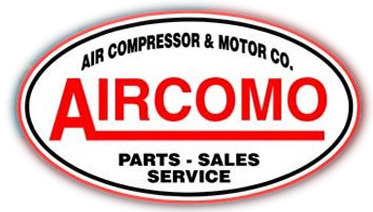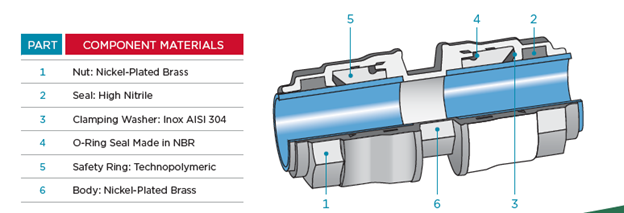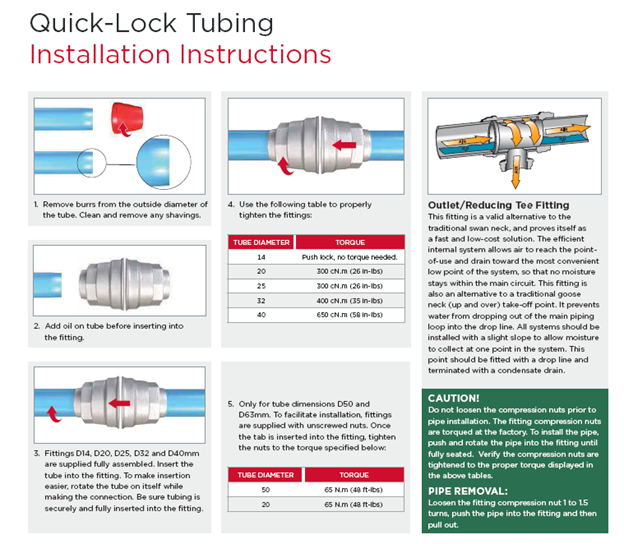Understanding compressed air basics is key to energy and cost efficiency in various industrial settings. A compressed air system consists of several components, the most crucial among them being the air compressor and the piping. The air compressor generates compressed air which is then transported through the piping network to different end-use applications.
The function of the piping system extends beyond mere transportation. It plays a pivotal role in determining the efficiency of your compressed air system. An optimized piping system ensures minimal energy losses, leading to significant energy savings and thereby lower operational costs, translating into substantial cost savings for businesses.
In this article, we delve into the importance of compressed air piping and how its optimization can bring about substantial advantages. We also explore strategies to minimize energy losses in your compressed air system, and provide actionable guidelines on:
- Selecting suitable piping materials and sizes
- Designing effective piping layouts
- Ensuring leak-free connections
- Carrying out regular maintenance for sustained performance improvements
This knowledge is not just theoretical; it’s practical and applicable. You can use it to make informed decisions that will enhance your compressed air system’s performance while keeping your energy costs low.
To begin with, let’s discuss the significance of choosing the right air compressor for your system. For instance, VFD Series compressors are known for their energy efficiency as they adjust motor speed according to demand, resulting in substantial energy savings.
Moving on to piping selection, opting for high-quality materials is crucial. However, it’s equally important to choose appropriate pipe sizes that cater to your specific needs. For instance, if you require a non-cycling compressor with a capacity range between 5 to 500 SCFM, consider investing in HPR/HPRN Series Non-Cycling Compressors which offer reliable performance.
Once you have the right compressor and piping materials in place, designing an effective piping layout is essential. This involves considering factors such as pressure drops, distance, and flow requirements. For compressors with a capacity of 1150 SCFM, the D1150 Series can be a suitable choice.
Additionally, ensuring leak-free connections is crucial for maintaining system efficiency. Regular maintenance practices such as checking for leaks and promptly repairing them can go a long way in reducing energy losses.
By implementing these strategies and following our guidelines, you can significantly improve your compressed air system’s performance while keeping your energy costs low. So let’s delve into the hows and whys of efficient compressed air piping.
The Role of Piping in a Compressed Air System
When you look at the complex network that makes up a compressed air system, the air compressor line plays a crucial role. Its job is to carry the compressed air produced by the air compressor to different areas in an industrial environment where it will be used.
Here are three key reasons why the compressed air line is so important:
- Efficiency: Think of the compressed air line as the circulatory system of the setup, with air needing to flow freely for optimal efficiency.
- Design Significance: The design and installation of an air pipe network directly impact how well tools and machinery receive their power source — compressed air.
- Quality Impact: The quality and condition of these pipes not only affect how the air is delivered but also its quality when it reaches its final destination — any contamination or drop in pressure can have a big effect on performance.
To fully grasp just how essential these components are, imagine this scenario: you have top-of-the-line ELGi rotary screw air compressors but they’re connected to low-quality piping. The result? Reduced efficiency and higher operating expenses. Similarly, even if you have high-performance models like the RV series 2-15 HP or large-scale solutions such as Titan series 6-2000 CFM, if there are issues with the air piping system, you won’t be able to fully utilize your equipment’s capabilities.
This clearly shows that choosing the right piping isn’t just about connecting one point to another; it’s about ensuring a smooth flow that maintains pressure and delivers compressed air consistently wherever it’s required.
Understanding the Energy Losses in Inefficient Piping Systems
When assessing the efficiency of compressed air systems, two critical factors that often lead to energy loss are friction loss and leakage. These inefficiencies not only increase operational costs but also strain your compressor equipment, potentially leading to premature wear.
1. Friction Loss
As compressed air travels through piping, it encounters resistance, especially when pipes are rough or incorrectly sized. This resistance is known as friction loss. Air moving past the inner walls of the piping loses energy, which results in a pressure drop. Over time, this can escalate energy consumption as compressors work harder to maintain required pressure levels.
2. Leakage
Another substantial source of energy loss is leakage. Even small leaks can have a significant impact on system efficiency and energy usage. A 1/8-inch hole in a 100 psi system could cost thousands of dollars each year in wasted electricity.
Ensuring that your air compressor operates at peak performance involves addressing these losses head-on. It’s crucial to select quality piping materials and design an efficient layout to prevent these issues from occurring. For example, using smooth-walled and correctly sized piping minimizes friction loss, while regular maintenance checks help detect and repair leaks promptly.
To further enhance the efficiency of your compressed air system, consider incorporating high-performance equipment like the SP32 Series 300-450 HP compressors. These advanced machines are designed to optimize air delivery while minimizing energy consumption.
Proper comprehension of these elements allows for informed decisions when installing or upgrading your compressed air system. For more insights into maintaining an efficient operation, explore the hot air archives at Aircomo.
1. Selecting the Right Type of Piping Material
Choosing the appropriate pipe material is critical to the efficiency and longevity of your compressed air system. Each material has its own set of advantages and potential drawbacks, so the choice should be based on the specific needs and conditions of your system.
Here are some commonly used pipe materials for compressed air systems:
- Galvanized steel: It is popular due to its strength and durability, but it can rust internally over time, reducing airflow.
- Copper pipes: They are resistant to corrosion, easy to install, and have excellent heat transfer properties. However, they are more expensive and require professional installation.
- Stainless steel: It offers exceptional durability and corrosion resistance, making it ideal for harsh environments. However, its high cost may not be justified for all applications.
- Aluminum: It is lightweight, easy to install, and highly resistant to corrosion. It usually provides excellent energy efficiency and durability.
While PVC and black iron pipes are commonly used in various applications, they have significant drawbacks for compressed air systems:
- PVC can shatter under high pressure, posing safety risks.
- Black iron is prone to rusting and developing leaks.
Instead of these materials, consider using safer alternatives such as oil-free compressors or reciprocating air compressors that offer better performance and reliability for compressed air applications. Another option worth exploring is Anest Iwata’s oil-free scroll compressors, which provide superior efficiency while eliminating the risk of oil contamination in your system.
2. Sizing Considerations for Minimizing Pressure Drop
When designing a compressed air system, it’s important to understand pressure drop. This refers to the decrease in pressure as air moves through the pipes and can have a significant impact on system performance. The objective is to keep a steady pressure level so that your tools and processes can function optimally.
How Pressure Drop Affects Performance
Pressure drop can have the following effects:
- Underperforming tools or machinery: Lower pressure can result in tools not working as efficiently as they should.
- Increased energy consumption: When there’s a loss of pressure, compressors have to work harder to compensate for it, leading to higher energy usage.
- Higher operational costs: Inefficient systems with significant pressure drops can lead to increased expenses over time.
Factors That Influence Pressure Drop
Several factors contribute to pressure drop, but two main ones are:
- Pipe Length: The longer the distance air has to travel, the more resistance it encounters, resulting in greater pressure loss.
- Pipe Diameter: Smaller pipe diameters create more obstacles for airflow, causing higher pressure drops.
How to Calculate and Choose the Right Pipe Size
To minimize energy losses due to pressure drop:
- Determine your system’s requirements for flow rate (how much air you need) and maximum allowable pressure drop (how much pressure loss you can tolerate).
- Use equations or online calculators that take into account airflow, pipe length, and diameter to find the best pipe size for your needs.
- Select pipes that offer a good balance between cost and minimal pressure loss.
For example, when using Sullivan Palatek rotary screw air compressors, known for their efficiency, it’s crucial to choose the correct pipe size to ensure they perform as intended.
If you’re experiencing significant pressure drop in your current system, it may be worth reassessing your piping layout. You can gain valuable insights from these pressure drop archives. Alternatively, you can explore options like the D185 series 185 SCFM compressor, which is designed to work well with appropriately sized pipes.
Remember, selecting the right pipe size isn’t just about going for the largest diameter your budget allows. It’s about finding a size that maintains efficiency without unnecessary costs.
3. Minimizing Friction Loss with Proper Piping Layout Design
When it comes to compressed air piping, friction loss is a significant concern that can decrease the efficiency of your system. The design of your piping layout plays a critical role in mitigating this issue. Specifically, sharp elbows and bends in the pipes can cause increased airflow turbulence and frictional resistance, leading to unwanted pressure drops.
Here are best practices for layout design to ensure minimal pressure drop:
- Straight Runs: Opt for longer straight runs of pipe where possible, as these produce less turbulence than angled sections.
- Gentle Bends: When bends are necessary, use those with a larger radius to reduce resistance and maintain smoother airflow.
- Fewer Elbows: Minimize the use of elbows in the system. Each elbow can add to the pressure drop, so fewer turns mean better flow and energy savings.
- Optimal Fitting Choices: Select fittings wisely; certain types can create less turbulence. For instance, consider using full-flow tee fittings instead of standard ones.
Remember that a well-designed compressed air system will not only perform better but also last longer due to reduced stress on components. If you’re integrating products like HPD Series Heated Blower Purge Dryers or ensuring optimal function of oil-free reciprocating compressors, maintaining a streamlined piping layout will contribute to their efficiency and longevity.
By adhering to these layout principles, you’ll experience less friction loss and ultimately conserve energy in your compressed air system.
4. The Importance of Leak-Free Connections and Regular Maintenance in Compressed Air Systems
Having leak-free pipes is crucial for a compressed air system. It not only helps maintain energy efficiency but also ensures system reliability. Air leaks are like money leaks; they can significantly increase energy costs by making the air compressor work harder to maintain pressure.
Here are some key areas to focus on for leak prevention and overall maintenance:
1. Leak-Free Connections
Regular inspection and maintenance of connections are essential. Every joint, fitting, and component must be checked regularly for signs of wear and potential leakage points. Taking a proactive approach to detecting and repairing leaks can prevent costly downtimes and energy waste.
2. Drip Legs for Condensate Management
The installation of drip legs at strategic points in the system is vital for managing condensate. Drip legs collect water that naturally accumulates due to temperature changes or from the ambient air drawn into the compressor. By removing this condensate, you reduce the risk of pipe corrosion and subsequent leaks—prolonging the life of your piping infrastructure.
3. Ball Valves and Unions for Maintenance Flexibility
Incorporating ball valves allows for sectional isolation of the compressed air system. This means you can perform maintenance on one part of the system without shutting down the entire operation—a key feature for maintaining productivity. Similarly, unions facilitate easy disassembly and reassembly during repairs or expansions, ensuring that maintenance doesn’t become a bottleneck.
By focusing on these maintenance aspects, businesses can protect their compressed air systems from unexpected failures and inefficiencies. It’s an ongoing process that requires attention to detail and regular checks.
For more information on different types of air compressors that can help you determine your maintenance strategy, you can visit this page. If you’re thinking about upgrading or installing a new system, exploring options like the Advantage Series 5-25 HP could be beneficial to improve the overall efficiency and reliability of your compressed air system.
With these strategies in place, your compressed air system will run more effectively, resulting in noticeable energy savings and a reduced environmental impact.
Professional Installation: A Key Factor in Piping System Performance
When it comes to compressed air pipe installation, your choice of professional installer can have a significant impact on performance. While it might seem like a task you could undertake yourself, the complexity of these systems and the critical role they play in your operations make it a job best left to the professionals.
Experienced professionals offer several advantages:
- Proper Sizing: They understand the importance of using the right size of pipes to minimize pressure drop and maximize efficiency.
- Correct Alignment: Proper alignment ensures that air flows smoothly through the system, reducing wear and tear and extending the life of your equipment.
- Adequate Support: Pipes need to be securely fastened to prevent movement and reduce vibration, which can lead to leaks and other problems over time.
By hiring professionals who specialize in compressed air piping installation, you can ensure that your system is installed correctly from the start. This will help you avoid costly repairs down the line, maintain optimal performance, and save both energy and money in the long run.
Although there may be an initial cost involved with hiring a professional, consider it an investment in your business’s future. You can request a quote for installation services or learn more about available services on our website. Remember, the success of any compressed air system relies heavily on its installation. Choose wisely.
Optimizing for Efficiency: Balancing Air Quality Requirements and Energy Savings
When designing a compressed air system, you must strike a balance between ensuring adequate airflow to meet operational demands and achieving optimal energy efficiency. Pipe size optimization plays a critical role in this balancing act. If pipes are too small, they cause unnecessary pressure drops, leading to increased energy consumption as compressors work harder to maintain the required pressure. Conversely, oversized pipes add unnecessary cost and complexity without proportionate benefits.
To ensure your system operates efficiently:
1. Design for the present and future
Scalability is vital. A piping layout that can accommodate future expansion saves you from costly overhauls down the line. When planning, allow for additional capacity but avoid going overboard; excess volume can result in higher energy consumption due to increased leakage rates and surface area for heat loss.
2. Implement smart design strategies
Utilize looped systems where possible to reduce pressure drop and provide more uniform air distribution. This approach can also help in maintaining consistent pressure during periods of high demand.
3. Consider air quality requirements
High-quality air is essential for many industrial applications, which may necessitate specific pipe materials or configurations. For instance, desiccant air dryers can be integrated into the system to remove moisture and ensure that dry, clean air is delivered to sensitive equipment.
Remember that each decision impacts the next; selecting the appropriate pipe material and size not only directly affects performance but also long-term scalability and energy efficiency. As your needs evolve, so should your compressed air system—without incurring excessive energy costs or compromising on air quality.
Conclusion
Implementing the strategies discussed for optimizing compressed air piping systems can lead to significant long-term cost savings and energy savings. An efficient compressed air piping system not only reduces operational costs but also enhances the reliability and performance of industrial applications.
You are encouraged to:
- Revisit your current system
- Assess its efficiency
- Consider the adjustments that could transform the energy consumption and cost-effectiveness of your operations.
For those who may require expertise in achieving an optimal setup, seeking professional assistance is a prudent step. Professionals bring a wealth of experience in proper installation and maintenance practices, ensuring that your system operates at peak efficiency.
If you’re looking for high-quality components like liquid ring vacuum pumps from Busch to complement your optimized system, explore your options there.
Remember, regular maintenance is crucial for sustained performance improvements. Incorporate checks for leak-free connections and ensure that components such as drip legs, ball valves, and unions are well-maintained for continued efficiency. If you need to manage your equipment or require support, log in to your account for detailed information and assistance.
By embracing these suggestions, you position your business to reap the rewards of an energy-smart compressed air system: reduced costs, better sustainability credentials, and a competitive edge in your industry.




